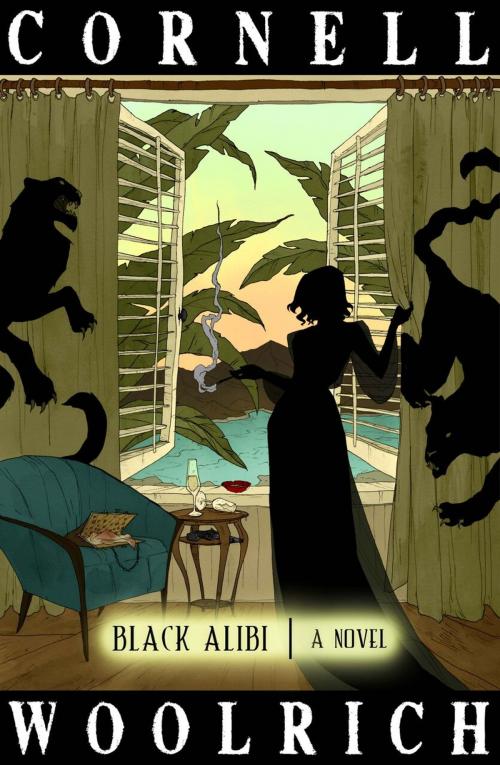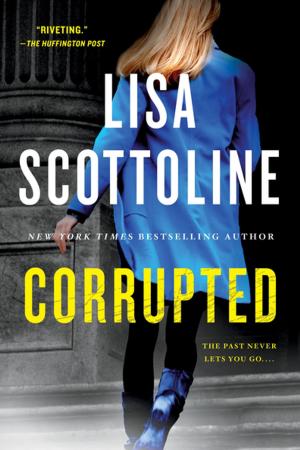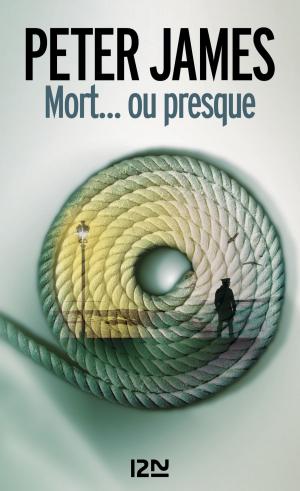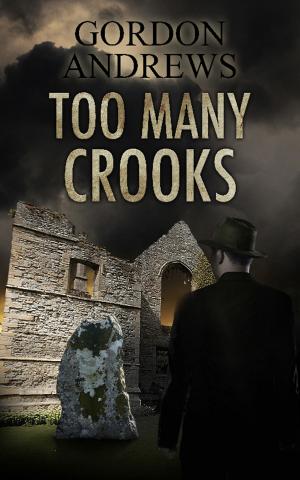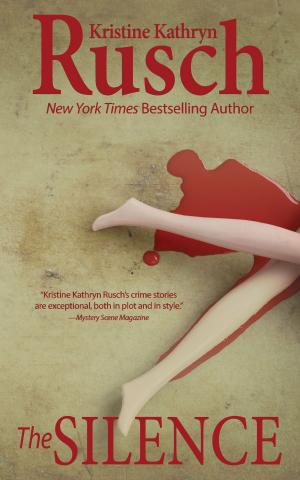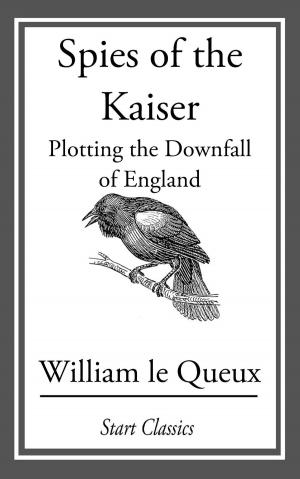| Author: | Cornell Woolrich | ISBN: | 1230001983906 |
| Publisher: | The Estate of Cornell Woolrich in conjunction with Renaissance Literary & Talent | Publication: | October 31, 2017 |
| Imprint: | Language: | English |
| Author: | Cornell Woolrich |
| ISBN: | 1230001983906 |
| Publisher: | The Estate of Cornell Woolrich in conjunction with Renaissance Literary & Talent |
| Publication: | October 31, 2017 |
| Imprint: | |
| Language: | English |
Black Alibi is classic Woolrich, a creepy tale of suspense. The story revolves around Kiki Walker, a second-rate American singer who becomes a sensation in South America known for her beauty and wildly red hair. Her press agent arranges for her to parade up and down the streets with a "tamed" black jaguar to boost her popularity even further.
However, Kiki doesn't show the same assuredness about this animal as does Manning when he shows up with the cat, it's "black, spade-shaped, ears wickedly flat, muzzle to carpet, coming in fast with an impression of zigzag undulation.” It actually frightens her but he convinces her she'll be a sensation. It all goes well until a quick stop for a photo op where the flash bulbs cause the animal to go wild, attacking the singer before disappearing into an alley.
Kiki isn't hurt badly but four young women are mauled and slashed to death in what the authorities believe to be attacks by the wild animal. Manning, feeling responsible, joins the investigation, but believes that someone is using the city's fear of the jaguar to cover a murderous blood-lust.
Woolrich continues his successful "Black Series" with this third installment, following The Bride Wore Black (1940) and The Black Curtain(1941). This suspense novel delivers all the fear one would expect when venturing out alone into dangerous streets.
Cornell Woolrich, one of the most prolific suspense writers of the twentieth century, once suggested the title "First You Dream, Then you Die" for an unwritten short story. The title is emblematic of Woolrich's tortured life, which evinced itself with mesmerizing clarity in his spellbinding works. Often referred to as the twentieth century's Edgar Allan Poe, Woolrich wrote more than 250 mystery titles—both novels and short stories—all of which exhibit an unparalleled capacity for sustained suspense.
The Bride Wore Black, first published in 1940, was Woolrich's first full-length foray into crime fiction. The novel's effects were far-reaching, as it established the French schools of roman and film noir. Its bleak, darkened setting reflects the author's blackened view of life seen through a glass darkly. Woolrich's nightmare world is one of human anguish—of lives torn apart by destructive forces that are incomprehensible. A relentless tale of vengeance and thwarted love, the novel established Woolrich's Black series, which also included The Black Curtain, Black Alibi, The Black Angel, and Rendezvous in Black, and a voluminous output of unforgettable "tales of love and despair."
Thwarted love often stands central in the thematic development of Woolrich's suspense novels. The Bride Wore Black is a classic representative of this theme, as the protagonist, Julie, loses her new husband moments after their marriage. Determined to avenge his death, she transforms her capacity for love into a harpy-like resolve for systematically eliminating his murderers. (The incomparable French film director François Truffaut captured the atmospheric quality of The Bride Wore Black on the screen, with Jeanne Moreau as Julie.) What emerges in this careful plot of contorted emotion and murder is Woolrich's unique ability to evoke sympathy for all characters, the essential element to the haunting quality of his enduring works.
Woolrich empathized with all of his characters; this sense of identification becomes most evident when they are hit by the revelation that they are driven by forces beyond their comprehension. This strong sense of sentiment sprang partly from the author's admiration for F. Scott Fitzgerald, another writer who often appeared thinly disguised as the various characters in his novels. Woolrich's first novel, Cover Charge, was a Jazz-Age tribute to Fitzgerald, a tale of youthful but desperate gaiety. Woolrich's capacity for compassion also stemmed, however, from a tortured life of loneliness and frustration.
Black Alibi is classic Woolrich, a creepy tale of suspense. The story revolves around Kiki Walker, a second-rate American singer who becomes a sensation in South America known for her beauty and wildly red hair. Her press agent arranges for her to parade up and down the streets with a "tamed" black jaguar to boost her popularity even further.
However, Kiki doesn't show the same assuredness about this animal as does Manning when he shows up with the cat, it's "black, spade-shaped, ears wickedly flat, muzzle to carpet, coming in fast with an impression of zigzag undulation.” It actually frightens her but he convinces her she'll be a sensation. It all goes well until a quick stop for a photo op where the flash bulbs cause the animal to go wild, attacking the singer before disappearing into an alley.
Kiki isn't hurt badly but four young women are mauled and slashed to death in what the authorities believe to be attacks by the wild animal. Manning, feeling responsible, joins the investigation, but believes that someone is using the city's fear of the jaguar to cover a murderous blood-lust.
Woolrich continues his successful "Black Series" with this third installment, following The Bride Wore Black (1940) and The Black Curtain(1941). This suspense novel delivers all the fear one would expect when venturing out alone into dangerous streets.
Cornell Woolrich, one of the most prolific suspense writers of the twentieth century, once suggested the title "First You Dream, Then you Die" for an unwritten short story. The title is emblematic of Woolrich's tortured life, which evinced itself with mesmerizing clarity in his spellbinding works. Often referred to as the twentieth century's Edgar Allan Poe, Woolrich wrote more than 250 mystery titles—both novels and short stories—all of which exhibit an unparalleled capacity for sustained suspense.
The Bride Wore Black, first published in 1940, was Woolrich's first full-length foray into crime fiction. The novel's effects were far-reaching, as it established the French schools of roman and film noir. Its bleak, darkened setting reflects the author's blackened view of life seen through a glass darkly. Woolrich's nightmare world is one of human anguish—of lives torn apart by destructive forces that are incomprehensible. A relentless tale of vengeance and thwarted love, the novel established Woolrich's Black series, which also included The Black Curtain, Black Alibi, The Black Angel, and Rendezvous in Black, and a voluminous output of unforgettable "tales of love and despair."
Thwarted love often stands central in the thematic development of Woolrich's suspense novels. The Bride Wore Black is a classic representative of this theme, as the protagonist, Julie, loses her new husband moments after their marriage. Determined to avenge his death, she transforms her capacity for love into a harpy-like resolve for systematically eliminating his murderers. (The incomparable French film director François Truffaut captured the atmospheric quality of The Bride Wore Black on the screen, with Jeanne Moreau as Julie.) What emerges in this careful plot of contorted emotion and murder is Woolrich's unique ability to evoke sympathy for all characters, the essential element to the haunting quality of his enduring works.
Woolrich empathized with all of his characters; this sense of identification becomes most evident when they are hit by the revelation that they are driven by forces beyond their comprehension. This strong sense of sentiment sprang partly from the author's admiration for F. Scott Fitzgerald, another writer who often appeared thinly disguised as the various characters in his novels. Woolrich's first novel, Cover Charge, was a Jazz-Age tribute to Fitzgerald, a tale of youthful but desperate gaiety. Woolrich's capacity for compassion also stemmed, however, from a tortured life of loneliness and frustration.
